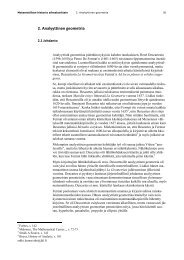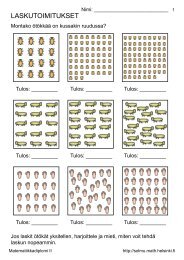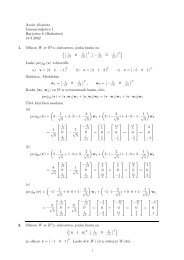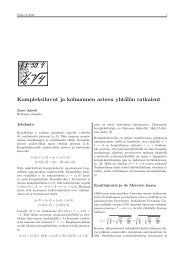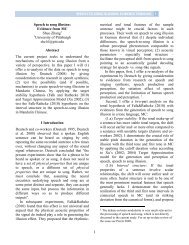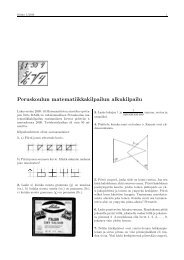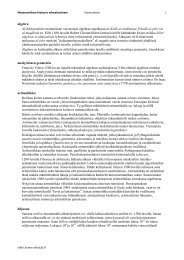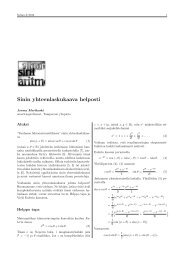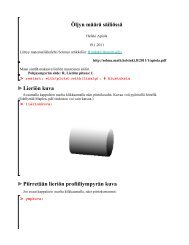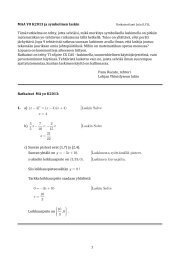Non-Newtonian turbulence: viscoelastic fluids and binary mixtures.
Non-Newtonian turbulence: viscoelastic fluids and binary mixtures.
Non-Newtonian turbulence: viscoelastic fluids and binary mixtures.
Create successful ePaper yourself
Turn your PDF publications into a flip-book with our unique Google optimized e-Paper software.
2.1. Polymer dynamics in <strong>fluids</strong> 37<br />
2.1.3 Dumbbell model<br />
A model which is very often used for its simplicity is the dumbbell model [41],<br />
where the complex structure of the polymer molecule is replaced by a couple of<br />
beads of negligible mass, connected by a spring. Such a spring has the same<br />
properties of an entire freely jointed chain (see sec. 2.1.1) of Hook modulus<br />
H = 3kBT<br />
2Rmaxb . The evolution of the dumbbell end-to-end vector R = x2 − x1<br />
is determined by different contributions: the hydrodynamic drag force acting on<br />
the polymer, thermal noise, <strong>and</strong> the elastic recalling force of the spring. In a homogeneous<br />
flow, the equation of motion for R then is:<br />
˙R = − H<br />
R + Bξ (2.14)<br />
β<br />
where β is the friction coefficient <strong>and</strong> ξ is a zero mean Brownian process with<br />
correlation 〈ξi(t)ξj(t ′ )〉 = δijδ(t − t ′ ). The relaxation time is clearly introduced<br />
as:<br />
τ ≡ β<br />
H<br />
(2.15)<br />
The dependence of the constant B on the gyration radius R0 <strong>and</strong> the relaxation<br />
time τ can be derived as follows. The formal solution of eq. (2.14) allows to<br />
estimate the long time behaviour of the square mean elongation as 〈R2 〉 ∼ τB2<br />
. At 2<br />
is comparable<br />
equilibrium, the elastic energy of the spring U ∼ H〈R2 〉eq ∼ HR2 0<br />
to the thermal energy kBT , which implies B = (2R2 0 /τ)1/2 .<br />
U ( x1)<br />
R(t)<br />
U (x2 )<br />
Figure 2.4: Sketch of the dumbbell in a velocity field u(x).<br />
In a non-homogeneous flow, polymers can also get stretched, because of different<br />
velocities of the two beads (see fig. 2.4). Therefore, a term ˙ R = u(x2, t) −<br />
u(x1, t) must be added to the evolution equation (2.14). Since the flow is smooth<br />
at the scale of the polymer, we can approximate this stretching term with the ve-<br />
37



